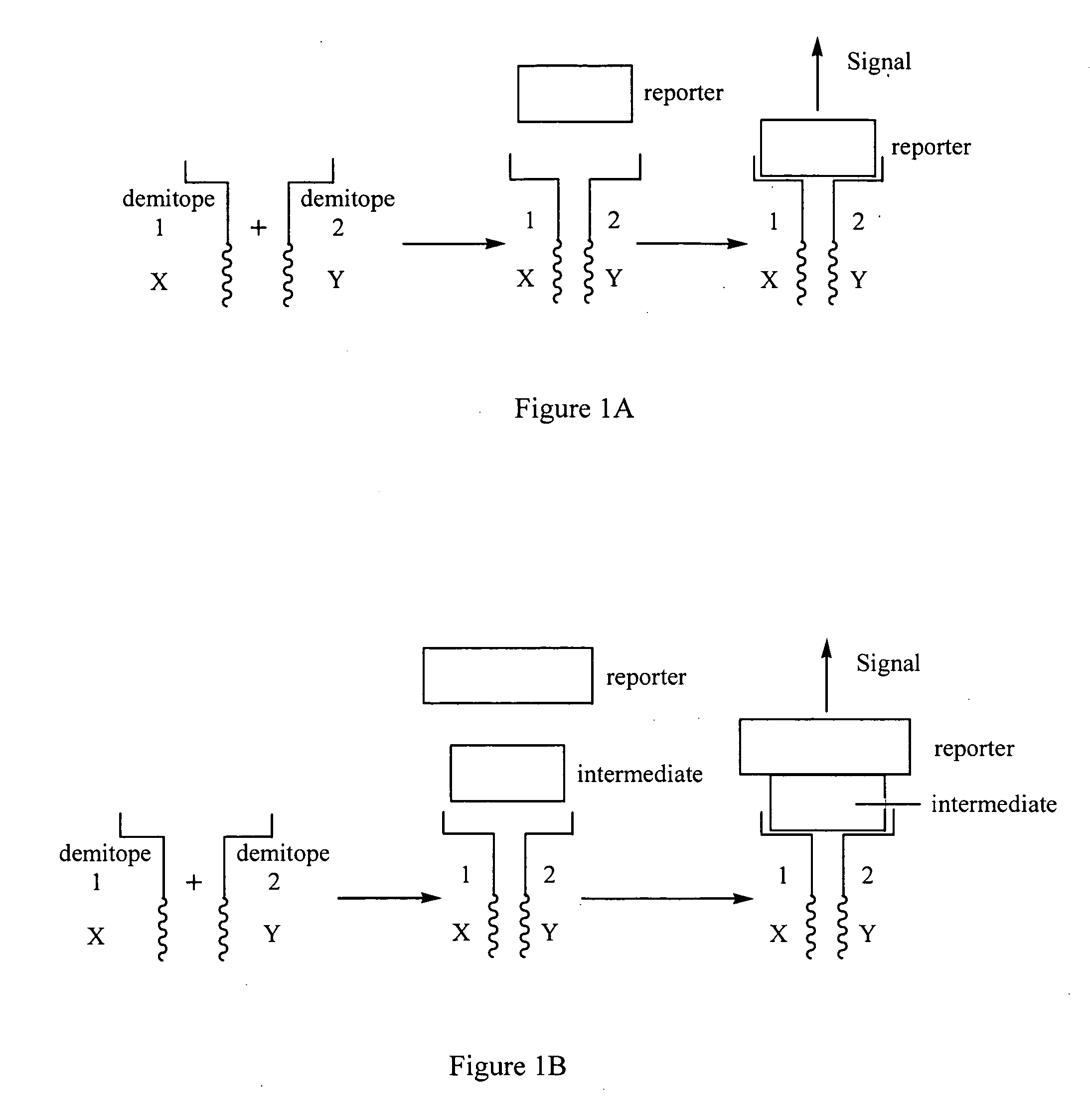Real time detection of intermolecular interaction
a real-time detection and intermolecular interaction technology, applied in the field of real-time detection of intermolecular interaction, can solve the problems of limited number of constructs, relatively elaborate reporter system, and inability to directly measure the interaction of two individual substances
- Summary
- Abstract
- Description
- Claims
- Application Information
AI Technical Summary
Benefits of technology
Problems solved by technology
Method used
Image
Examples
Embodiment Construction
[0017] Prior art methods of determining interactions between substances rely on complex reporting systems which are not immediate or proportional to affinity and thus preclude real time tracking of the interaction either in vitro or in vivo. The present invention provides methods whereby real time detection is possible by virtue of the immediate reporting of paratope formation.
[0018] By “immediate” reporting is meant two things. First, there is no cascade of reactions needed to obtain a detectable signal. The signal flows directly from the binding of the reporter to the paratope. Second, the response is linear—i.e., the stronger the binding of the two substances to be tested, the greater the readout resulting from the reporter. Thus, for example, if the reporter binding is detected by fluorescence quenching, the magnitude of the quenching will be directly proportional to the strength of the interaction of the two substances to be tested.
[0019] As used herein, the word “paratope” r...
PUM
| Property | Measurement | Unit |
|---|---|---|
| fluorescence quenching | aaaaa | aaaaa |
| fluorescence | aaaaa | aaaaa |
| NMR spectrum | aaaaa | aaaaa |
Abstract
Description
Claims
Application Information
 Login to View More
Login to View More - R&D
- Intellectual Property
- Life Sciences
- Materials
- Tech Scout
- Unparalleled Data Quality
- Higher Quality Content
- 60% Fewer Hallucinations
Browse by: Latest US Patents, China's latest patents, Technical Efficacy Thesaurus, Application Domain, Technology Topic, Popular Technical Reports.
© 2025 PatSnap. All rights reserved.Legal|Privacy policy|Modern Slavery Act Transparency Statement|Sitemap|About US| Contact US: help@patsnap.com

